JACQUES LOUIS NYST
Jacques Louis Nyst, who was a painter, multimedia artist, publicist and also pioneer of Belgian video art, produced a very consistent body of video work. Together with his wife, Danièle Nyst, he made reflective, capricious, fantastic, poetic or purely theoretical videos. The concern of how art ‘functions’ is always central and Nyst referred to his work as ’rational art’: a confrontation between objects and their representations. In an early phase, he tested his own ideas about semantics in a relatively strict way, formally. For the viewer, however, Nyst had already paved the way for countless interpretations.
Spanning a period of over thirty years, Jacques Louis Nyst produced a very consistent video oeuvre. Together with his wife, Danièle Nyst, he made video works whose approach varied from reflective, capricious, fantastic, poetic or theoretical, presenting semiotic studies into language or the representation of mental codes, symbols, characters and objects. Jacques Louis Nyst studied at the Academies for the Fine Arts in Liège and Madrid, and began painting, writing and producing video works. He would later return to the Liège academy to teach drawing and video.
An emotional and/or intellectual contemplation on how art 'functions' is central to his work. Nyst investigated how semiotics in and around the visual arts are generated through the aid of image, sound and language. He referred to his work as 'rational art', indicating that it had everything to do with structure, in the literal sense of the word: a confrontation between objects and their representations. In his paintings and drawings, for example, Nyst juxtaposed 'image identity' with abstract meaning, with the intention of creating altogether new readings. Nyst extended this technique to his personal investigations. He viewed a simple installation, such as one of his paintings hung alongside a monitor showing a video work - also his - as a valuable eye-opener, a key that had to form a mental starting block towards an entirely new universe of meanings and interpretations.
With his extensive body of video work, Nyst related to Belgian surrealist tradition. In an early phase, he investigated his own ideas about semantics in a still relatively strict form. For the viewer, however, he had already opened the door to countless meanings and interpretations. His 1975 video, La farde aux canards, combines ducks with an array of functional objects (a foot bath, electrical cables, and so on), entities whose literal meanings have nothing whatsoever to do with one another, and which in that sense, also remain ’constant’ in substance. Nyst’s combinations, however, generate new and different meanings, such as aggression, and in this case, the viewer’s hilarity. In a second stage, Nyst focussed more sharply on language, now in its most basic form: as a mechanism meant to generate the actual interpretation process. For films such as The Clown and the Hole (1981), apart from the visual subjects he presents (here a clown, learning to play a small trumpet around a small opening), Nyst follows a pattern in order to form an image: of contact with material or matter, of the suggestion it makes, of its contemplation and the sense of it. From there, his videos alternately touch on non-fiction, the imaginary, humour or a story.
Awards:
1990: Mention spéciale du Jury (for Comme s’il y avait des pyramides), 19e Festival international du nouveau cinéma et de la vidéo, Montréal (CN) 1989: Grand Prix Ex-Aequo (for Saga Sachets), 10th International Video and Electronic Arts Festival, Locarno (CH) 1985: New Media Narrative Art Video Award (for Hyaloïde), Video Culture International Competition, Toronto (CN) 1984: Prix FR3 (for J’ai la tête qui tourne), Festival International de Vidéo & Télévision, Montbeliard (FR) - New Media Narrative Art Video Award (for J’ai la tête qui tourne), Video Culture International Competition, Toronto (CN) 1983: First Award (for Thérésa Plane), International Video Festival, Grenoble (FR) - 'Vidéographie' Award by the RTBF (for Thérésa Plane), Festival International de Vidéo de Charleroi, Charleroi (BE) 1973: Prix Jeune Peinture Belge 1972, Palais des Beaux-Arts/Paleis voor Schone Kunsten, Brussels (BE) - 2nd Prize, Prix Europe de la Ville d’Ostende, Casino-Kursaal, Ostend (BE) 1971: Prix Jeune Peinture Belge 1970, Palais des Beaux-Arts/Paleis voor Schone Kunsten, Brussels (BE) 1967: 1st Prize (monumental painting category), Académie des Beaux-Arts, Liège (BE) - Prix Marie, Ville de Liège (BE)
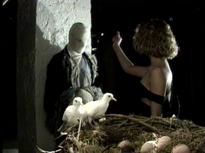
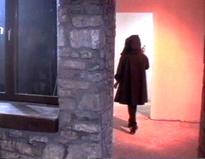
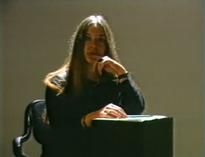
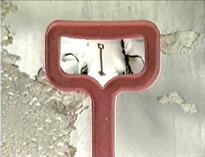
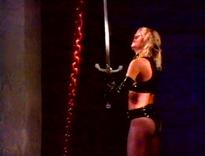
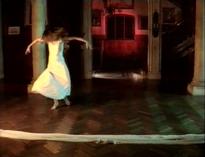
- ° 1942 Liège (Belgium).
- † 1996 Sprimont (Belgium).
-
EVENEMENTEN
- argos open lounge
- Closing Event & Summer Drinks: Exhibitions Wendy Morris & 'Pies in the skies'
- Onstage
- Jacques Louis Nyst - L’objet
- From Broodthaers to Braeckman
- argos@atelier340
- STEP UP! Belgian Dance and Performance on Camera 1970-2000 - Chapter 2
- STEP UP! Belgian Dance and Performance on Camera 1970-2000 - Chapter 1
- Argos @ EMST
- rewind productions
- Looking back - A video selection from the Argos collection for Contour On Tour: Video art in the Flemish Parliament
- Argos @ Yokohama and Kyoto
- Transmediale 2012 - Festival for art and digital culture
- World Day for Audiovisual Heritage 2016
- Ciclo Vídeo Belga
- Quelques vidéastes de Belgique @ Musées de la Ville de Strasbourg
- FFWD / RWD
- Real to Reel
- A world of objects
- Pies in the Skies
- There all is order and beauty
- C12 x ARGOS = 30
-
At view in the media library
WERKEN- 4 points limités
- Aile 4 neige
- Balançoire
- Comme s’il y avait des pyramides
- Deux oiseaux chantent
- Entre l'ombre et la lumière
- Hyaloïde
- Information sur la couleur
- J'ai la tête qui tourne
- La caméra est reliée au magnétoscope par un câble de 100 mètres
- La clé du paysage
- La farde aux canards
- La mort d'une poule
- L’Apocalypse selon Theresa
- Le cygne et son image
- Le livre est au bout du banc
- Le paysage
- Le rituel des 16 faces
- Le robot
- Le tombeau des nains
- Le train fantôme
- Lettre ouverte
- Le voyage de Christophe Colomb
- L'image
- L'objet
- L'ombrelle descendant un escabeau
- L'Ombrelle en Papier [Conférence Vidéo]
- Myrtle Beach
- Partition pour un mouton
- Possibilités pour un écran de télévision / réflexion-émission
- Revolver
- Saga sachets, Légende du val d’Ourthe et de l’Amblève
- The clown and the hole
- Thérésa plane
- Un dimanche après-midi à 6h du soir
- White lady